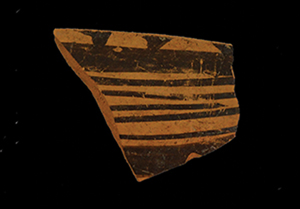Article contents
From local to long-distance: Neolithic and Bronze Age ceramic networks in north-western China
Published online by Cambridge University Press: 17 August 2023
Abstract

During the Neolithic and Bronze Age, goods and ideas moved between Central Asia and the Chinese Central Plain via north-western China. While the crops, animals and technologies exchanged are well documented, the local and social bases of these interactions are poorly known. Here, the authors use petrographic analysis of ceramic sherds from Gansu Province, China, to document the local production of pottery vessels and their circulation between sites. Individual vessel forms are associated with multiple paste recipes indicating the production of similar products by different communities of practice. It is argued the circulation of these vessels forged inter-community relationships. In aggregate, these local networks underpinned longer-distance exchange between Central and East Asia.
Keywords
Information
- Type
- Research Article
- Information
- Copyright
- Copyright © The Author(s), 2023. Published by Cambridge University Press on behalf of Antiquity Publications Ltd.
References
- 6
- Cited by

